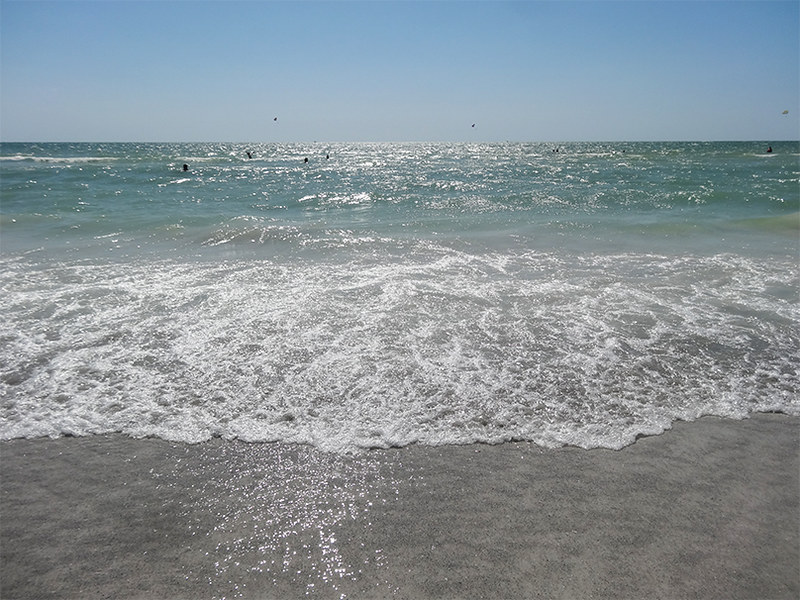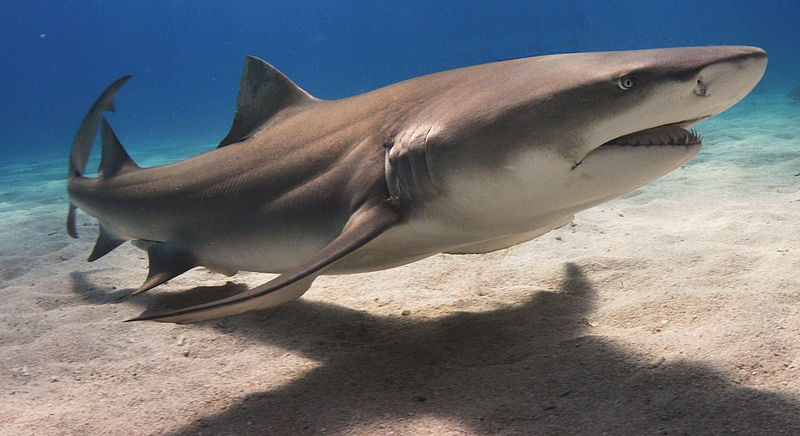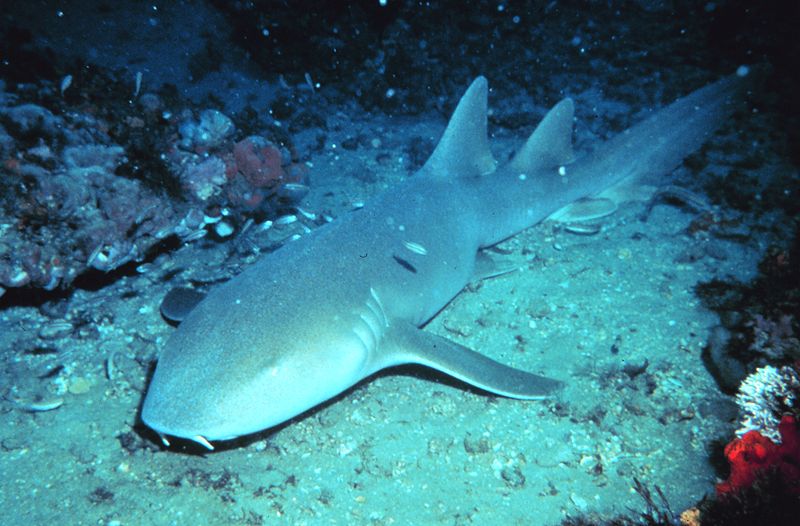St. Pete Beach is just outside of Tampa, Florida, and it’s the perfect destination for a beach vacation.
It’s stock full of recreation and relaxation, including top restaurants, day trips, an iconic city scene, and, of course, the beaches.
St. Pete Beach is right along the Gulf of Mexico at the mouth of Tampa Bay. It’s one of the most developed vacation spots in the area, with beach access directly from most hotels. With plenty of parks, museums, and dining, your vacation here will be one for the books.
Plus, the beaches and water at St. Pete Beach are just about unbeatable, with beautiful blue Gulf waves and stunning beach sunsets. In fact, some say that it’s home to the number one beach in the U.S!
If you’re looking to visit the beaches of St. Pete, though, you might have one big question:
Does St. Pete Beach, FL have sharks?

The waters around St. Pete beach are home to many different types of sharks, including:
- Hammerhead sharks
- Blacktip sharks
- Lemon sharks
- Bull sharks
- Nurse sharks
- And bonnethead sharks
However, a large majority of the sharks found in and around St. Pete Beach are extremely docile, and shark attacks by even the more aggressive bull shark are exceedingly rare.
Let’s take a closer look at the types of sharks that live near St. Pete, photos, shark attack history and statistics, and more.
Types of Sharks at St. Pete Beach, FL
The Gulf of Mexico, and all the bays along it, is home to an abundance of shark species.
The waters here are very friendly to sharks and other marine animals due to ideal water conditions, and while there may be a huge variety of marine animals in this region, that doesn’t mean they’re aggressive or dangerous!
St. Pete Beach is along Tampa Bay. Being one of those bays along the Gulf, it’s no exception to the norm that many sharks call this area home.
It’s good to know, though, that sharks here tend to be fairly mild, and a few of the species known to frequent nearby waters are actually considered friendly!
Here are a few that tend to populate these waters.
Hammerhead Sharks

The great hammerhead shark found near St. Pete Beach is the largest of the many hammerhead species, and indeed of all sharks — they can reach 20 feet in length as adults!
The great hammerhead is technically capable of harm due to its size, but like most hammerheads, they rarely attack humans.
It’s one of the more curious shark species, and will sometimes approach humans to get a better look, but it isn’t considered harmful. The great hammerhead is valuable as a food, specifically for shark fin soup, and as such it is now a critically endangered species.
Blacktip Sharks

Blacktips are very common along the Gulf coast. It’s a medium-sized shark, averaging a little over five feet long.
It’s not uncommon to spot a blacktop while swimming or fishing, as they live most comfortably in shallow coastal waters and near bays and estuaries.
Blacktips are one of the few species that torpedoes out of the water to feed, like spinner sharks.
Blacktip sharks are not considered a threat to humans.
On the contrary, they suffer greatly from overfishing, and are considered a near-threatened species for extinction.
Lemon Sharks

Lemon sharks are some of the most common in Florida’s waters. They can be anywhere from four to seven feet in length, and spend time in shallow waters close to shore.
But don’t let their large size get to you! While lemon sharks can be capable of fits of aggression and speed, they’re usually quite docile and are considered easy-going and not a threat to humans.
Lemon sharks spend time in groups, and are a social shark species.
Research shows that their brains have the same relative size as many mammals and birds, particularly those that show more complex social patterns.
While this research is still active, so far it suggests that lemon sharks are able to learn from social interactions, establish social bonds, and cooperate with other individuals!
Bull Sharks

Bull sharks have a recognizable shape — they’re very broad and stout relative to other sharks, with dark coloring on the tops of their bodies.
They’re on the larger size for St. Pete Beach sharks, averaging between 7 and 11 feet in length.
Bull sharks are some of the most aggressive St. Pete Beach sharks.
Typically, this is the only species that causes concern, due to their natural behavior, but even then, you’re extremely unlikely to be attacked by a bull shark.
Most of the risk comes simply from the overlap in territory; bull sharks prefer shallow water, which puts them in closer contact with people. It’s advised to take the right precautions, like those below, but there is little need to worry beyond that.
Nurse Sharks

Nurse sharks sound mellow, and they are.
These large sharks, ranging from seven to nine feet in length and resembling a catfish, spend most of their time lounging near the sandy bottom of shallow, warm waters.
That being said, it’s still important to give them the right respect. Nurse sharks are some of the larger sharks in the area, and they’re still sharks — with large and very strong jaws and sharp teeth.
While they don’t tend to act aggressively, they can bite defensively if bothered or accidentally stepped on.
Bonnethead Sharks

Bonnetheads are part of the hammerhead shark species, with a recognizable, shovel-shaped head.
They’re much smaller than some of their counterparts, however, coming in at a comfortable 3-4 feet!
St. Pete Beach bonnethead sharks are considered harmless to humans, and they tend to spend their time near shallow bays and estuaries.
Does St. Pete Beach have a History of Shark Attacks?
Florida is surrounded by ocean water on most sides, so it’s no surprise that people are concerned about sharks when planning to visit the area.
The state is known to have a number of shark encounters each year. However, almost every single one of those happens on the Atlantic coast.
Even there, and indeed in any part of the world, shark attacks are rarely the result of direct aggression. Most sharks become aggressive only when desperate for food or when provoked.
The majority of shark bites are believed to be the result of mistaken identity. Sharks don’t actually eat people, and we don’t taste good to them.
Often, bites result from a human resembling food like a seal or other small animal, and when a shark realizes its mistake, it often simply lets go.
The Gulf Coast of Florida may be home to plenty of shark species, and while some of those species are dangerous, they are rarely found close enough to shore to be of harm.
In particular, Tampa Bay sees only 12 shark species regularly, and only one of those — the bull shark — needs to be watched out for.
Sharks are present in Tampa Bay and around St. Pete Beach yearround, but warmer months from late spring and into fall see higher numbers.
This is due to the bay being used as a nursery ground, meaning it’s a safe place for young sharks away from predators and provides plenty of opportunity for food.
Not to fret, though, as these young sharks aren’t usually harmful, and their adult mothers quickly head back out to sea.
A dangerous encounter with a shark here is significantly less than a one-in-a-million chance.
Avoiding St. Pete Beach Sharks (Tips & Things to Know)
St. Pete Beach and Tampa Bay at large are hotspots of activity in the warm summer months — for humans as well as young sharks.
But even with that vacation and tourism frenzy, shark attacks here are exceedingly rare.
As with any warm-weather beach, there are a few things you can keep in mind to stay smart while swimming or relaxing in an area, like St. Pete Beach, that humans share with sharks.
- Stay away from swimming in open water. Since Tampa Bay is a natural nursery for sharks, the numbers of individuals found here can be quite high. Some species prefer specific areas of the water, while others roam more freely. Regardless, the open water is shark territory.
- Avoid swimming at dawn and dusk. Sharks are most active during twilight hours and at night. This is when they’re hunting, and when the apex predator in them comes out. These hours are both when an individual shark is more active, and when the number of active sharks is higher, making the chances of an encounter statistically greater. Plus, dim lighting makes it more difficult to distinguish things — whether that’s you looking for sharks or a shark looking for food.
- Don’t over-splash. Excessive splashing, erratic swimming, or other big movements can resemble the movement of many marine animals like seals. And while we may not be prey to a shark, those animals are. Behavior like splashing can draw unwanted attention from a nearby shark. This is also a good tip if you’re traveling with dogs — it’s best practice to keep pets out of the water, specifically for this reason.
- Avoid shiny jewelry and swim suits. Shiny materials or jewelry can catch the sunlight, which can make them appear similar to fish scales. As with the previous point, this can attract unwanted attention from sharks that may simply be perusing for lunch. It’s best practice to avoid wearing any jewelry and to be mindful of how your swim suit or clothing may appear to sharks.
- Respect them. At the end of the day, all sharks are still apex marine predators. While most of the St. Pete Beach sharks are considered harmless to humans, all of them are capable of biting, especially out of defense. So, while there are services to swim with sharks or otherwise observe them, never, ever harass them.
Wrapping Up
The short answer is, no, you don’t need to be worried about sharks at St. Pete beach.
The Tampa Bay area is home to about a dozen species of sharks. Among those, only one poses a notable threat to humans, and even then, avoiding an encounter with a bull shark is simply a matter of taking the right precautions.
Beyond that, St. Pete Beach sharks are not considered harmful, and many of them actually create a great opportunity for people to become more educated about sharks and the important role they play in ecosystems.
Regardless, sharks here won’t be interfering with your beachtime getaway at St. Pete Beach, and you’ll be free to enjoy one of the world’s best vacation beaches.
For more guides, check out:
- The states with the most and least shark attacks
- Sharks in Saint Lucia
- Jellyfish in St. Pete Beach
- Sharks in Miami
Hope this helps!
I was bitten by a shark at Reddington Shores, Florida. The jaw size (estimated by the bite on my leg) was about 12 inches. I was bitten on June 23, 2022. It was just before sunset. The shark breeched the water some ways behind us and we were trying to get out of the water when I was bitten. It bumped me, bit me, and thank god released my leg. It did chase me into shore.